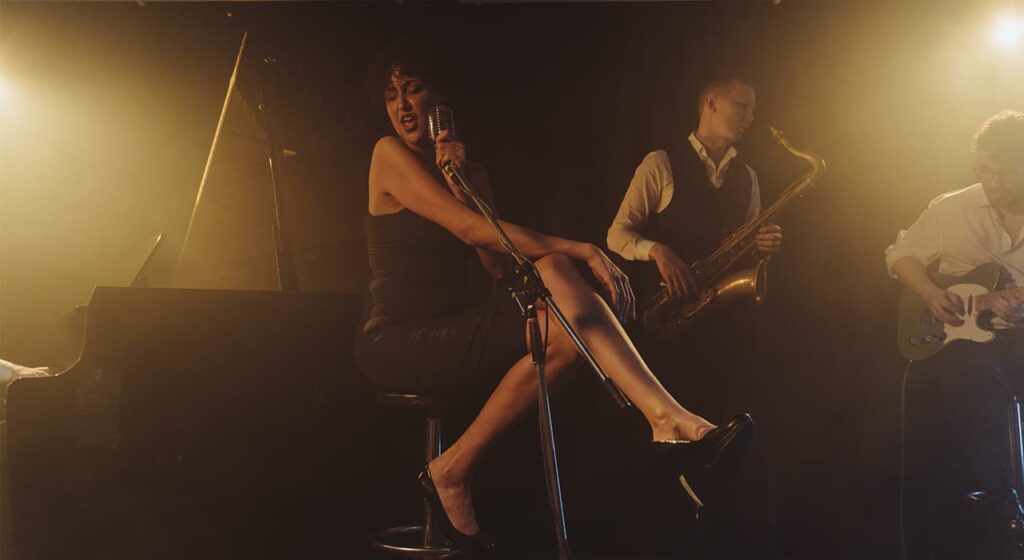It was formed at the turn of the 19th and 20th centuries as a result of the synthesis of elements of two musical cultures – European and African. African elements include polyrhythm, repetition of the main motif, vocal expressiveness, and improvisation, which entered jazz along with common forms of Negro musical folklore – ritual dances, work songs, spirituals, and blues.
Avante-Garde
Originated in the 1960s. It was characterized by the desire to free jazz from the “fetters” of harmony, rhythm, meter, and traditional structure, to make it program music. Avant-garde jazz is based on new expressive means and techniques. It is fully subordinated to the goals of performing individual and collective self-expression.
Acid Jazz
So what is Acid Jazz? It is a funky musical style with built-in elements of jazz, 70s funk, hip-hop, soul and other styles. It can be sampled, it can be “live,” and it can be a mixture of the latter two.
Basically, Acid Jazz emphasizes music over lyrics/words. It’s club music that aims to get you moving.
Big Band.
Of course this is not a style of jazz, but a type of jazz instrumental ensemble, but still it was included in the table, because any jazz played by “big band” stands out very much on the background of individual jazz performers and small bands.
Bebop
This jazz style formed in the early to mid-40s of the 20th century, which ushered in the era of modern jazz. Characterized by a fast tempo and complex improvisations based on changes in harmony rather than melody.
Boogie Woogie.
Boogie woogie in its “uncommercialized” forms is an instrumental solo combining elements of blues and jazz. From the blues in the boogie woogie – 12-step progression and a kind of “blues” sound with slides (so called sliding from the black key to the white one, played with one finger), all kinds of melismas, trills, inarticulate “slipping” by adjacent notes. From jazz – the importance of improvised solos, which is why pianists often turned to jazz standards in search of improvisational ideas.
Bossa Nova.
In rhythmic terms, the southern part of the New World has had a noticeable influence in our century on all popular (and jazz) music of the world and has given it much in terms of rhythmics. In the course of the century the tango, rumba, beguine, cha-cha-cha, calypso, son, merengue, mambo and, of course, samba came from here, and in addition – a lot of different Latin American percussion instruments (percussion) appeared on the stages of the world.
Classic Jazz
Generally accepted summary designation of early jazz styles, the existence of which is usually dated from the late 19th century to the second decade of the 20th century, that is, until the appearance of “white” orchestras, which played in the manner of Dixieland.
In the late 1930s an attempt was made to restore old New Orleans jazz under the names New Orleans Renaissance and Dixieland Revival.
